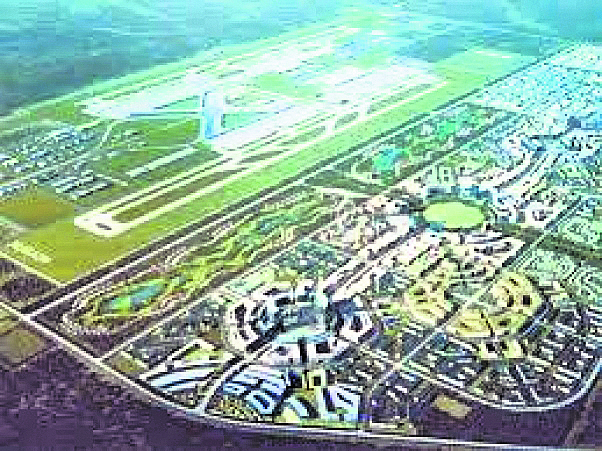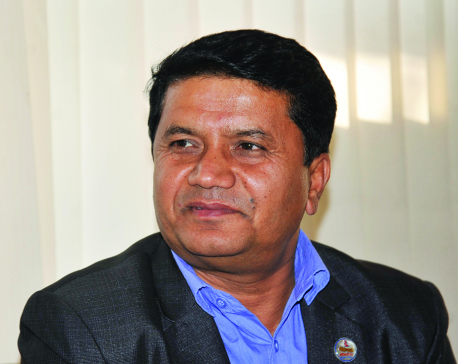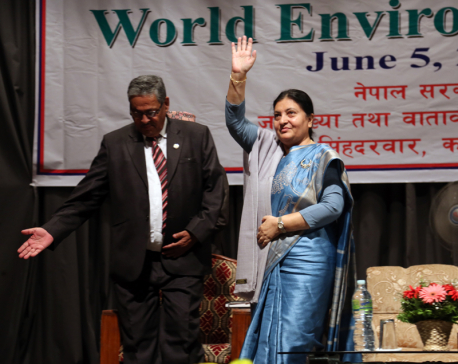
OR

More from Author
Environment Impact Assessment report of Nijgadh airport does not consider how mass tree felling will impact ecology
The Environmental Impact Assessment (EIA) report on Nijgadh International Airport (NIA) has disregarded the fate of 2.4 million trees of Nijgadh virgin forest along with its richest bio diversity, endangered, threatened species of wild life and more than 500 species of avifauna. This assessment is totally unacceptable at a time when there is a growing demand for call for action to save the natural forests to combat climate change risk.
Public Interest Litigation (PIL) has been filed at the Supreme Court by Pro-public and concerned individuals including myself. The Supreme Court has scheduled the full bench hearing on this case on December 1. It has sought a copy of EIA of NIA along with related documents.
EIA of Nijgadh looks like a copy paste of EIA of a hydropower project.
Project highlights this forest is one of the best Sal Forest in the region. Sal trees are germinated and grow only through natural process. They cannot be substituted through re-plantations, which means 52 percent of total loss of the forests in project area.
Nijgadh forest extends from Nawalparashi to Bagmati River without any gap except rivers.
The EIA fails to highlight how mass tree felling will impact the main corridor of elephants. Herds of elephants cross this forest. This forest is a home to number of species, water resources and minerals.
ICAO regulation clearly mentions that constructions of airports are strictly restricted at the protected forests. Parsa National Park (PNP) is linked with Nijgadh forest. PNP is declared National Park because it is a continuous forest of Chitwan National Park. There is a huge number of wildlife in PNP (latest tiger census says 19 tigers are located at the region).
The EIA does not mention the environmental impact of Kathmandu Nijgadh fast track road, which is integral to Nijgadh airport, either. Likewise, construction materials such as sand and aggregates, which will be extracted from two largest rivers Lal Bakaiya and Pasah for airport construction, are not mentioned in the EIA.
Besides, the claim that Nijgadh airport will serve 60 million passengers by 2030 is hard to justify. Then there is a pressing concern: “Have we made agreement with India for air route permission, before chopping off 2.4 million trees”? Why must we cut down these many trees even before detailed project report has been finalized? Where is the feasibility study report of 2011? Why was it not handed to EIA team? Why has not this report been made public?
I visited Nijgadh forest along with Parliamentary Committee members in an attempt to save Nijgadh forest. Under the shade of beautiful Pipal tree, chief guests were addressing the local leaders. The locals looked confused. I think of the fate of this Pipal tree every time I hear the news about cutting down trees from Nijgadh forest.
I am not against development. Let us upgrade the existing airports. Let us explore the alternatives.
The author is environmental and heritage activist
You May Like This

A case for Nijgadh airport
The Supreme Court on Friday directed the Office of the Prime Minister and the Ministry of Tourism and Civil Aviation... Read More...

'Not a single tree more than absolutely necessary will be cut down for Nijgadh airport'
Nijgadh International Airport, which could potentially become the game-changing project of Nepal, is mired in controversy. Conservationists argue the government... Read More...

World Environment Day- President seeks combined efforts to conserve environment
KATHMANDU, June 5: President Bidya Devi Bhandari has called on one and all to dedicate themselves to the conservation of... Read More...






Just In
- Challenges Confronting the New Coalition
- NRB introduces cautiously flexible measures to address ongoing slowdown in various economic sectors
- Forced Covid-19 cremations: is it too late for redemption?
- NRB to provide collateral-free loans to foreign employment seekers
- NEB to publish Grade 12 results next week
- Body handover begins; Relatives remain dissatisfied with insurance, compensation amount
- NC defers its plan to join Koshi govt
- NRB to review microfinance loan interest rate












Leave A Comment